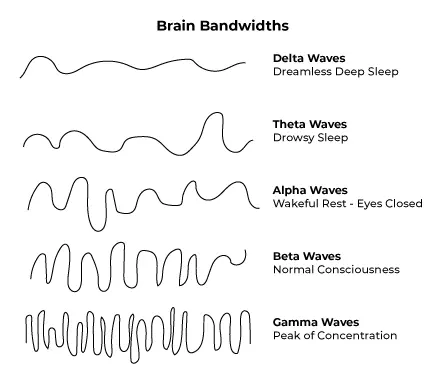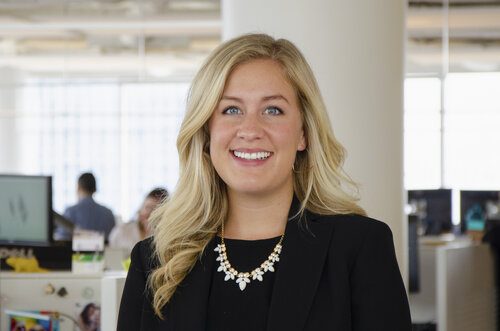OUR VOICE
Home › Our Voice › Articles › Concentration ≠ Creativity
Concentration ≠ Creativity
Creativity is a force of nature more than ever these days. People in the workforce are searching every day for what they can do to set themselves apart. Creativity is a talent and a skill that both employers and clients alike are feverishly seeking. It’s no surprise it is becoming a coveted strength to harness productively. How do we marry the idea of productivity and creativity to find a balance of what an employer wants and what allows us to do our best creative work?
In Creativity: Beyond the Myth of Genius by Robert W. Weisberg, creativity is defined loosely as “something novel that’s also useful and valuable,” and indubitably goes hand-in-hand with innovation. However, creativity doesn’t typically happen at our most focused state. As stated in this article, “Brain waves occur in one of five different bandwidths, from the low-bandwidth Delta Waves (.5 to 4 Hz) of our deepest sleep to the peak concentration Gamma Waves (25 to 100 Hz).”
.webp)

Creativity tends to happen in nearly the opposite state of pure concentration, lying somewhere in the zone of Alpha Waves (8 to 12 Hz). Meaning, the brain wave just outside of sleeping can equate to our best, most spontaneous bursts of creativity (what?!). Now, I must believe this is not always the case, as near-sleeping on the job would never get much accomplished. Alas, there is something to be said about the balance of routine and relaxation with the challenge-at-hand that stimulates these creative ideas and solutions.
Have you ever found yourself in a moment of pressure, drawing a total blank? But then hours, even days later when you’re driving home or out for a run, ideas flood into your head so fast you can’t get them all down on paper? (In these moments, I tend to bore Siri with my stream-of-consciousness thoughts and circle back to organize them later.) This is because, in these instances, in these Alpha wave occurrences, we have reached that balance of analytical thought and relaxation, and our mind goes through a series of connections, drawing from new, old, and abstract ideas that mold new solutions.
.webp)
How we can achieve this during the workday may be simpler than we think — according to Psychologist Robert Epstein’s reasoning in his book The Big Book of Creativity Games, reducing your stress as much as possible plays a significant factor. For instance, getting enough sleep at night and taking moments throughout the day to relax your brain, whether that’s walking to get a coffee, sitting in the sunshine, or chatting with a coworker can help reduce stress. Find ways to divert your concentration when you’re spinning your wheels yet hitting a wall. Practice making creativity a part of your routine – stay focused on your ideas as they occur and capture them. Challenge yourself to seek new, open-ended tasks and strive to continue broadening your knowledge on new topics.
As previously mentioned, the more new, old, and abstract thoughts your brain can make connections to, the more frequently and the more creative your ideas have the potential to be. Interestingly enough, it is possible to make creativity a habit with the practice of these elements and finding the flow within your creative thought. Ultimately when you can make a habit out of talent, you then create a skill. Well put in NPR’s article, “The answer will arrive when you stop looking for it.”
Our job in the industry of architecture and design is to meet the market’s need for fostering that creativity, figuring out how people achieve it, and setting it into motion. We see that architecture and design aren’t merely contriving a beautiful space. That’s why we must thoroughly assess the project objectives before forming it into the built environment. It is crucial to figure out how to create creativeness and hold onto it.
.webp)
The idea itself, at large, acts as a catch-all for the many different types of creative thinking we do to solve on a case-by-case basis. We use creativity every day, whether we are accountants, designers, doctors, or geo-scientists. Because creativity is so multi-faceted in this world, it is the key to our forward-moving and forward-thinking society. A few words from our PDR employees on how they define creativity as it relates to them:
“Creativity is an inspiration. Being inspired by pictures, stories, people, and sketches.” – Designer
“Creativity is the process in which people mold something out of nothing.” – Brand Experience Team Member
“Creativity is juggling multiple personalities, schedules, and projects while keeping things fun!” – Accountant
“Creativity is learning how to adapt to change continuously… applying effort to deeply understand what uniquely makes a client’s organization tick on a day to day basis.” – Workplace Consultant
What does creativity mean to you?

As a designer, Elsa is passionate about the impact the built environment can have on the well-being and productivity of people around the world. She is grateful to have the opportunity to create spaces for others that engage, inspire and overall have a positive affect.


